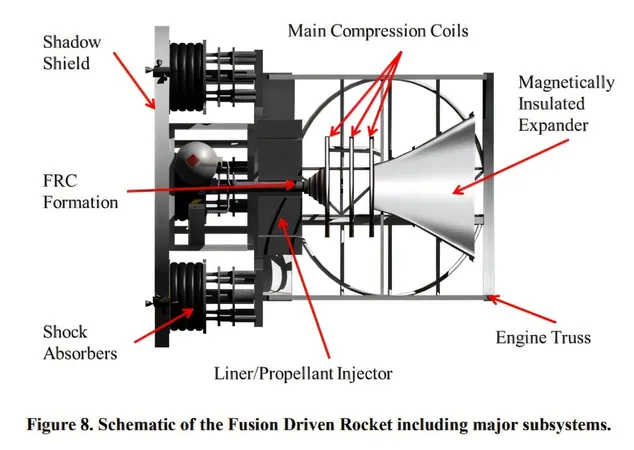
Unlocking Earth's Secrets: The Surprising Source of Hydrogen in Our Planet's Building Blocks
2025-06-02
Author: Jacques
The quest to understand how Earth secured its vital hydrogen supply has baffled scientists for ages. This element is crucial for making our planet habitable, yet the specifics of its origins remain a mystery.
Recent studies point to a fascinating group of meteorites known as enstatite chondrites (ECs), believed to be similar in composition to Earth's foundational materials. Traditionally, these meteorites were thought to contribute very little hydrogen due to their dry mineral makeup. However, fresh data now suggests they may actually hold more hydrogen than once believed, potentially accounting for much of Earth's current water reserves.
This revelation poses a striking contradiction, leaving us with unanswered questions about the true role of ECs in shaping our planet's hydrogen budget. Is the presence of hydrogen a consistent feature of Earth’s formation, or merely a coincidence?
To dive deeper, researchers employed cutting-edge sulfur X-ray absorption spectroscopy to analyze hydrogen levels in ECs. The results were eye-opening: hydrogen bound to sulfur was found in significant amounts throughout these meteorites, particularly in the finer matrix. In fact, it contained almost ten times more hydrogen-sulfur compounds than previously estimated.
The study also uncovered a link between these hydrogen compounds and tiny grains of pyrrhotite, a sulfur-rich mineral. At high temperatures, this mineral could facilitate reactions that produce hydrogen sulfide (H2S), a compound that may have interacted with molten rock. As conditions cooled rapidly, this could lead to the encapsulation of H2S within silicate-rich materials.
These groundbreaking findings suggest that Earth’s hydrogen may not be an incidental occurrence after all; rather, it implies a more systematic origin, reshaping our understanding of how Earth was formed and evolved. Are we inching closer to solving one of the greatest mysteries of planetary science?









 Brasil (PT)
Brasil (PT)
 Canada (EN)
Canada (EN)
 Chile (ES)
Chile (ES)
 Česko (CS)
Česko (CS)
 대한민국 (KO)
대한민국 (KO)
 España (ES)
España (ES)
 France (FR)
France (FR)
 Hong Kong (EN)
Hong Kong (EN)
 Italia (IT)
Italia (IT)
 日本 (JA)
日本 (JA)
 Magyarország (HU)
Magyarország (HU)
 Norge (NO)
Norge (NO)
 Polska (PL)
Polska (PL)
 Schweiz (DE)
Schweiz (DE)
 Singapore (EN)
Singapore (EN)
 Sverige (SV)
Sverige (SV)
 Suomi (FI)
Suomi (FI)
 Türkiye (TR)
Türkiye (TR)
 الإمارات العربية المتحدة (AR)
الإمارات العربية المتحدة (AR)